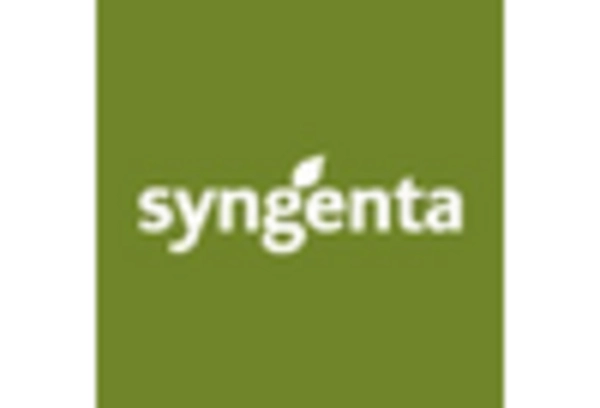Government Initiatives and Support
Government policies and initiatives play a crucial role in shaping the Rice Seed Treatment Market. Many governments are implementing programs aimed at promoting agricultural productivity and sustainability. These initiatives often include subsidies for seed treatments and funding for research into new agricultural technologies. For instance, certain regions have reported a 30% increase in the adoption of treated seeds due to government incentives. Such support not only encourages farmers to invest in seed treatments but also fosters a more robust market environment. As governments continue to prioritize food security, the Rice Seed Treatment Market is expected to benefit from increased funding and resources.
Focus on Pest and Disease Management
The Rice Seed Treatment Market is significantly influenced by the growing emphasis on pest and disease management. Farmers are increasingly recognizing the importance of protecting their crops from various threats, which has led to a rise in the use of seed treatments designed to enhance resistance. Recent data indicates that seed treatments can reduce pest damage by up to 40%, making them an attractive option for rice producers. This focus on integrated pest management strategies is likely to drive demand for innovative seed treatments that offer dual benefits of protection and improved yield. Consequently, the Rice Seed Treatment Market is poised for growth as farmers seek effective solutions to safeguard their crops.
Increasing Demand for High-Yield Varieties
The Rice Seed Treatment Market is experiencing a surge in demand for high-yield rice varieties. Farmers are increasingly seeking seeds that promise better productivity and resilience against pests and diseases. This trend is driven by the need to enhance food production to meet the growing population's needs. According to recent data, the adoption of treated seeds has been linked to yield increases of up to 20%. As a result, the market for rice seed treatment is projected to expand, with a focus on innovative treatments that enhance seed performance. The emphasis on high-yield varieties is likely to propel investments in research and development, further stimulating the Rice Seed Treatment Market.
Rising Awareness of Sustainable Agriculture
Sustainability is becoming a cornerstone of agricultural practices, influencing the Rice Seed Treatment Market. Farmers are increasingly aware of the environmental impacts of traditional farming methods and are seeking eco-friendly seed treatments. This shift is reflected in the growing market for organic and bio-based seed treatments, which are perceived as safer alternatives. Data suggests that the organic seed treatment segment is expected to grow at a compound annual growth rate of over 10% in the coming years. This trend not only aligns with The Rice Seed Treatment Market's appeal to environmentally conscious consumers, thereby driving the Rice Seed Treatment Market forward.
Technological Innovations in Seed Treatment
Technological advancements are reshaping the Rice Seed Treatment Market, introducing innovative solutions that enhance seed performance. The development of precision agriculture technologies, such as seed coating and biological treatments, is gaining traction among farmers. These innovations allow for targeted application of treatments, improving efficacy and reducing waste. Recent studies indicate that the use of advanced seed treatments can lead to a 15% increase in germination rates. As technology continues to evolve, the market is likely to see a proliferation of new products that cater to the specific needs of rice farmers, thereby driving growth in the Rice Seed Treatment Market.


















Leave a Comment